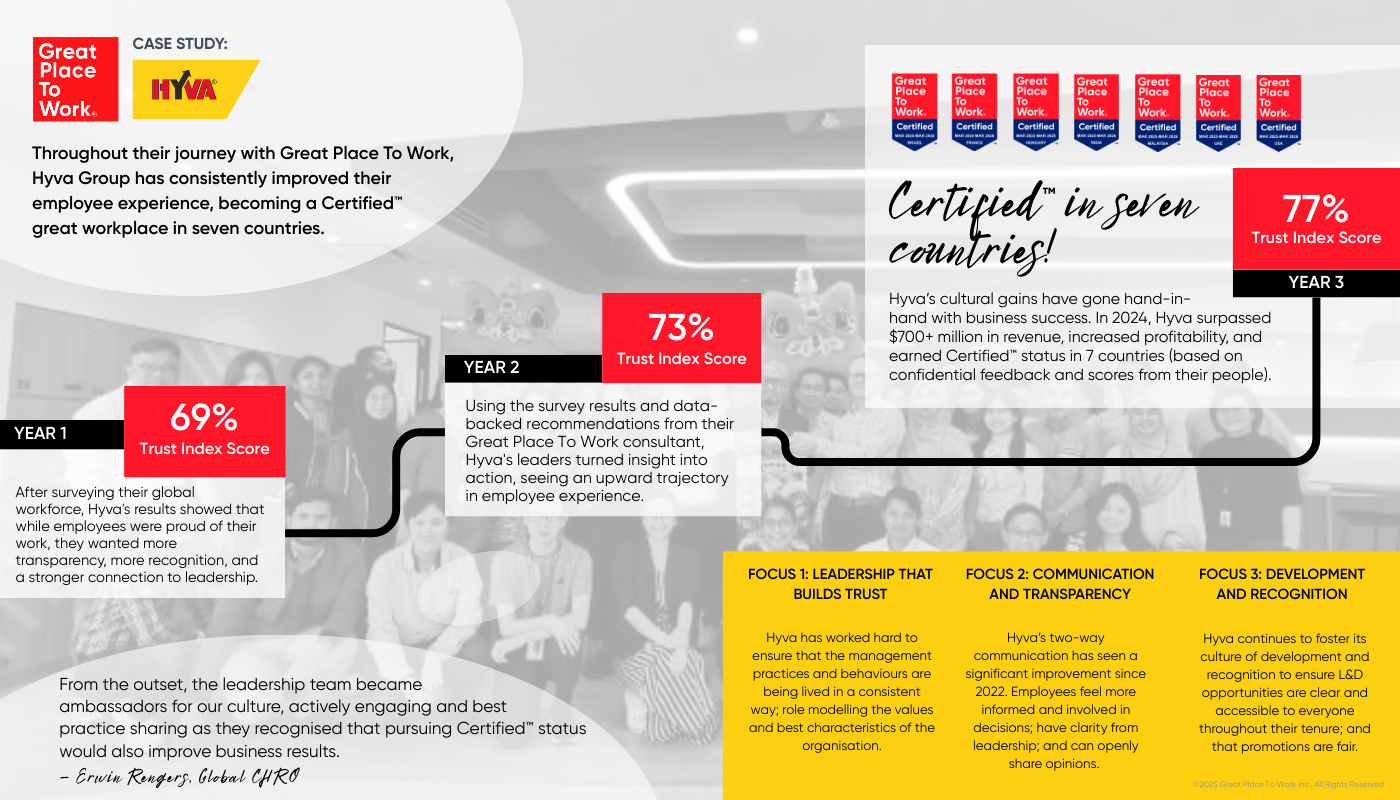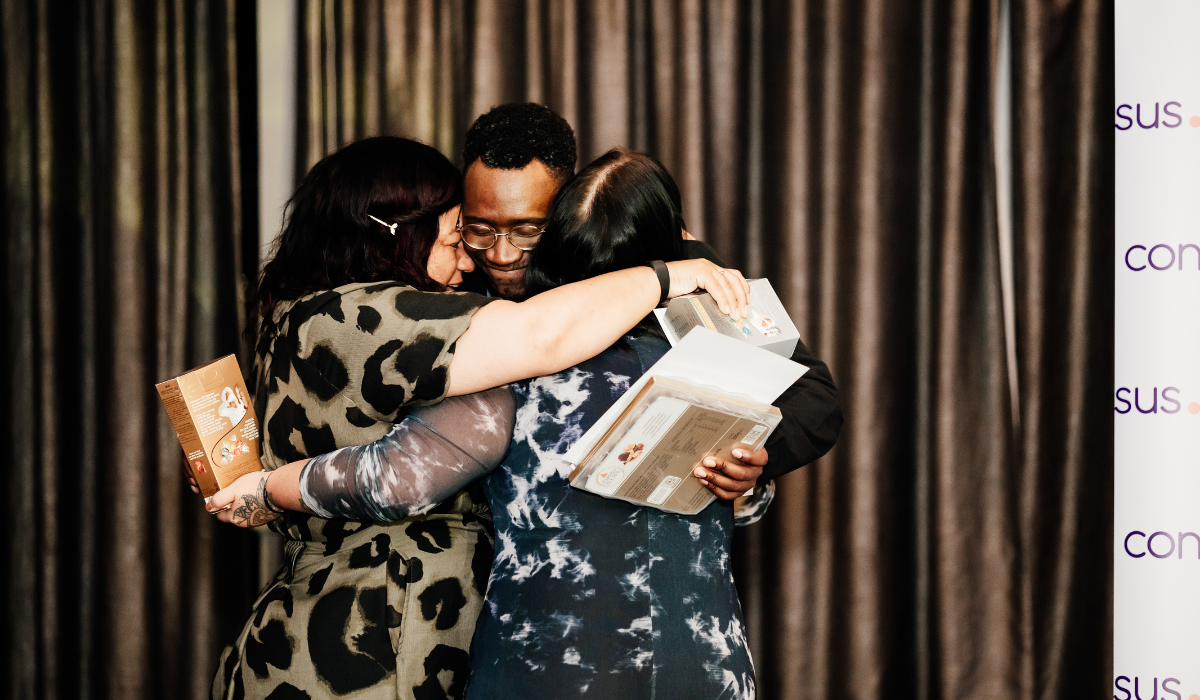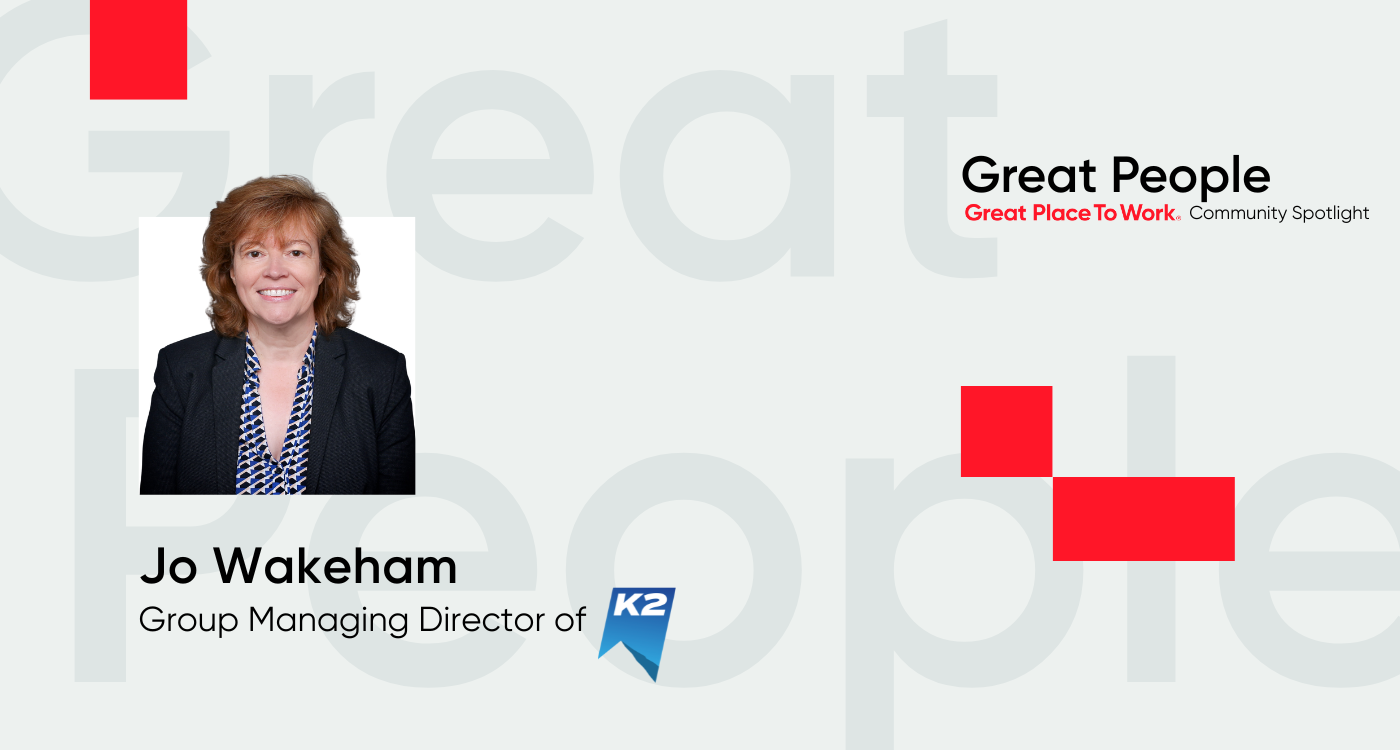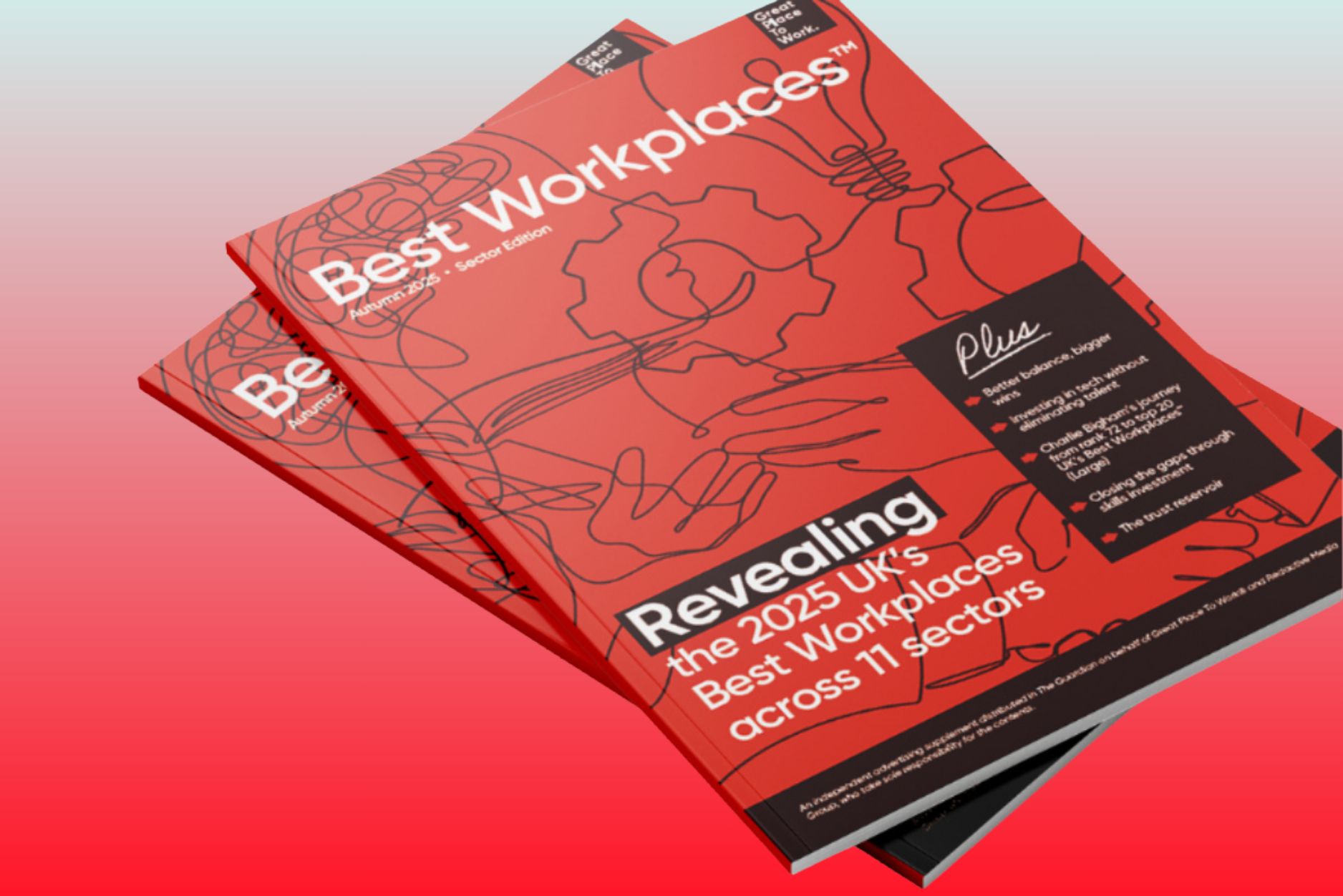Want to enhance employee wellbeing and development in your workplace? This blog shares insights from the UK's Best Workplaces™ on creating a culture where employees thrive both personally and professionally.
Last week, I had the privilege of participating in Great Place to Work’s ‘For All Community’ event, which gathered the UK’s Best Workplaces for meaningful discussions on employee wellbeing and development.
We heard from Sara Silvonen, Senior Consultant & Wellbeing Lead at Great Place to Work, about the wellbeing challenges. Speakers from multinational pharmaceutical company Bristol Myers Squibb (#8 UK's Best Workplace and #2 UK's Best Workplace for Wellbeing) and childcare provider Bright Horizons Family Solutions (#13 UK's Best Workplace and #17 UK's Best Workplace for Wellbeing) shared their approaches to employee wellbeing.
Luciana Barchet, Senior Consultant at Great Place to Work, emphasised the importance of employee development. The event concluded with insights from Softcat plc (#5 UK's Best Workplace and #1 UK's Best Workplace for Development), Kerv (#11 UK's Best Workplace and #10 UK's Best Workplaces for Development), and Home Group (#4 UK's Best Workplace and #16 UK's Best Workplaces for Wellbeing) on creating a culture of learning.
Key insights on employee wellbeing and development from the UK's Best Workplaces:
The squeezed middle manager
Sara Silvonen, Wellbeing Lead at Great Place To Work UK, kicked-off the session with an overview of the struggles faced by mid-level and frontline managers, who are trapped between growing pressures from leaders and managing an increasingly stressed workforce.
Frontline managers report the poorest levels of wellbeing, with just 37% saying that the demands of their job do not cause excessive stress1. Bristol Myers Squibb (BMS) noted that while a strong connection to purpose is a vital element of wellbeing at work, it can also contribute to stress and burnout, especially in businesses like theirs where their work truly does save lives.
BMS shared how they assist their managers, emphasising the importance of supportive resources, external advice, and access to Mental Health First Aiders. Frequent check-ins to discuss wellbeing and senior leaders modelling healthy behaviours set the cultural standard for a supportive work environment.
Creating conditions for people to thrive
Addressing burnout and stress is essential, but we need to focus on the root causes. The analogy used during the event was that many organisations focus on dealing with the “smoke” (burnout and stress) rather than the “fire” (underlying causes such as bad job design and poor internal communication).
Resources are often focused lower down the stream, which is like trying to put out a fire by blowing at the smoke. To create lasting change, we need to focus on fire safety - preventing the fire from starting in the first place. This means addressing systemic issues, such as improving job design, ensuring meaningful work, and fostering a supportive culture. Moving away from superficial solutions like ‘pizza parties,’ organisations must work to address the core issues affecting employee wellbeing.
Compassion does not equate to great people management skills
It’s common for those who are skilled at their job to be promoted to a people management role. However, high competency in a job, or even genuine compassion for employees, does not mean that managers are equipped with the necessary skills to lead.
BMS shared how they have developed formal training, support, and peer-to-peer connections to upskill managers, helping them handle workloads, address people challenges, and prioritise effectively. Their holistic approach includes training sessions on managing workload peaks and troughs. Connecting managers with peers helps to combat isolation and builds support networks, ensuring managers are equipped to support their teams while maintaining their own wellbeing.
.jpg?width=550&height=367&name=GPTW%20WB%26DV%20-%20Selfie%20Wall%20(21%20of%2032).jpg) Event photographs by EK Photography
Event photographs by EK Photography
Making the case for investment into wellbeing
Absenteeism, presenteeism, and staff churn cost the UK economy £43-£45 billion every year. Not investing in employee wellbeing is an expensive choice, compared to the positive attitudes, improved retention, and increased productivity that investment can bring. BMS shared how they are currently investing in wellbeing through the construction of a new workspace that puts people at the heart of the design.
For example, working spaces will always be next to windows, there will be easy access to outside spaces and informal meeting areas, and there will be quiet rooms and focus zones to support those who need it, particularly considering people with neurodiversity. They are investing in a workspace that lets everyone perform at their best.
An individualised wellbeing approach
A structured, comprehensive global wellbeing program, balanced with local freedom, can help create an encompassing and structured approach to employee wellbeing. For BMS their global programme considers physical (nutrition, exercise, sleep, health, safety), emotional (mental health, resilience, mindfulness, stress management, spirituality), life and work (social, purpose, work environment, career, community) and financial (planning, saving, spending). Their structured yet flexible approach provides processes and guidance, but allows for evolution and individual needs, ensuring that employees can receive tailored support.
| Useful Read: Hybrid Working for Wellbeing
Employee feedback loops
BMS’ People & Business Groups, centred around different D&I characteristics, play a vital role in their approach to employee wellbeing. For example, a group flagged an issue around how menopause was handled in the workplace. Active listening and action resulted in the creation of fast-track avenues to treatment for those who need it, training for awareness, and the sharing of authentic leadership stories. This approach to menopause is now being implemented globally.
Bright Horizons uses their ‘Be Heard’ forum to empower employee voices and gather qualitative data, ensuring that feedback is heard and acted upon. This active listening process means that employee concerns are listened to and addressed, fostering a supportive and responsive workplace culture.
Supporting frontline managers
Bright Horizons shared how their frontline managers have large, challenging, and unpredictable roles, that require resilience, a wide variety of skills and the ability to be proactive and reactive. To effectively support these managers, they have implemented several strategies:
- Teamwork: Frontline managers work in different child-care settings and so are geographically dispersed, this is addressed by buddying them up for mutual support.
- Acknowledging Work as a Stressor: Bright Horizons has committed to the Mindful Business Charter, promoting healthier ways of working and actively identifying and eliminating unnecessary stressors.
- Embedding Wellbeing: Early Years education regulations mandate that all staff must have regular one-on-one sessions. To prioritise employee wellbeing, they start these sessions with a wellbeing-focused conversation.
- Employee Recognition: Through initiatives like employee of the month, digital e-cards, a social feed for sharing best practices, and the annual Awards of Excellence, they foster a culture of recognition and support.
- Managerial Support Solutions: Frontline managers are equipped with a wide range of resources to help support their direct reports, without needing to shoulder excessive emotional burdens.
- Respecting Work/Life Balance: Recognising the challenges of required in-person work for all frontline managers, they promote flexible scheduling, respect rest periods during the workday, and ensure equitable distribution of out-of-hours responsibilities. Moreover, they create dedicated staff wellbeing spaces tailored to the nursery’s culture, such as quiet libraries or yoga spaces.
.jpg?width=550&height=367&name=GPTW%20WB%26DV%20-%20BMS%20(27%20of%2029).jpg) Event photographs by EK Photography
Event photographs by EK Photography
Making the business case for development funding
Despite current economic challenges and tighter budgets, investment in development remains essential for sustaining employee engagement and productivity. Luciana Barchet shared with us how 94% of employees would stay longer if their company invested in their career. Moreover, employees are four times more engaged and overall satisfied with their jobs when their company is invested in their development - a highly persuasive argument when considering that companies with highly engaged employees are 21% more profitable than those with low employee engagement.
Home Group discussed their 'Grow Our Own' approach to upskilling internal talent, where they leveraged and upgraded existing skills to create a sustainable and ongoing approach to development. When it comes to proving ROI, we discussed how the effectiveness of development can be measured in a variety of ways, including employee retention rates, asking colleagues if a new skill or behaviour has been adopted, or even an increase in productivity.
Enabling access to development
Development and training opportunities aren’t always seen as being accessible, especially for frontline employees. To address this, we need to shift the conversation and reposition learning. Development shouldn’t be seen as a tool (or punishment) for underperformers; it's a benefit for everyone. By fostering a culture of personal responsibility for ongoing learning, we can empower employees to take ownership of their growth. This means providing a variety of training resources to suit different learning styles. From in-person courses to bite-sized micro-learning, we can ensure development is accessible and engaging for all.
People power
In this fast-changing world, the key to a successful business won't be AI or tech, but the power of its people. Happy, skilled employees are the real superpower. Only they can create happy customers, which leads to a thriving business. Employees driven by culture and purpose will be the ones to harness AI and other tech to drive innovation. That’s why redefining career paths and providing opportunities for growth and development for employees with the right culture fit or soft skillset is critical.
Instead of a rigid ladder, companies should develop “career lattices” that allow people to move their skills to different areas within the business. This fosters growth and development while retaining top talent. Softcat's “Pathfinder” tool exemplifies this approach, helping employees see how their skills can be used in new ways.
Turning data into actionable insights
Time and time again throughout the session we kept coming back to the value of data. The Great Place to Work survey provides a wealth of data, enabling a move from reactive to proactive approaches to challenges such as wellbeing and development.
Trust Index™ Survey data can reveal what's happening within your organisation, while qualitative feedback from ERGs (Employee Resource Groups) and other groups can help you to provide the “why” behind the data. Understanding the data we have available can help us to take targeted actions for continuous improvement.
Empowering workforces through communication
Something Big is passionate about creating fairer, healthier, and happier workforces through inclusive and effective communications. An incredible 96% of their employees say the company is a great place to work – a stark contrast to the UK average of just 54%. Learn more about Something Big's workplace culture and services here.
[1] Great Place To Work 2023 UK Population Study
Event Photographs by EK Photography
.png)










